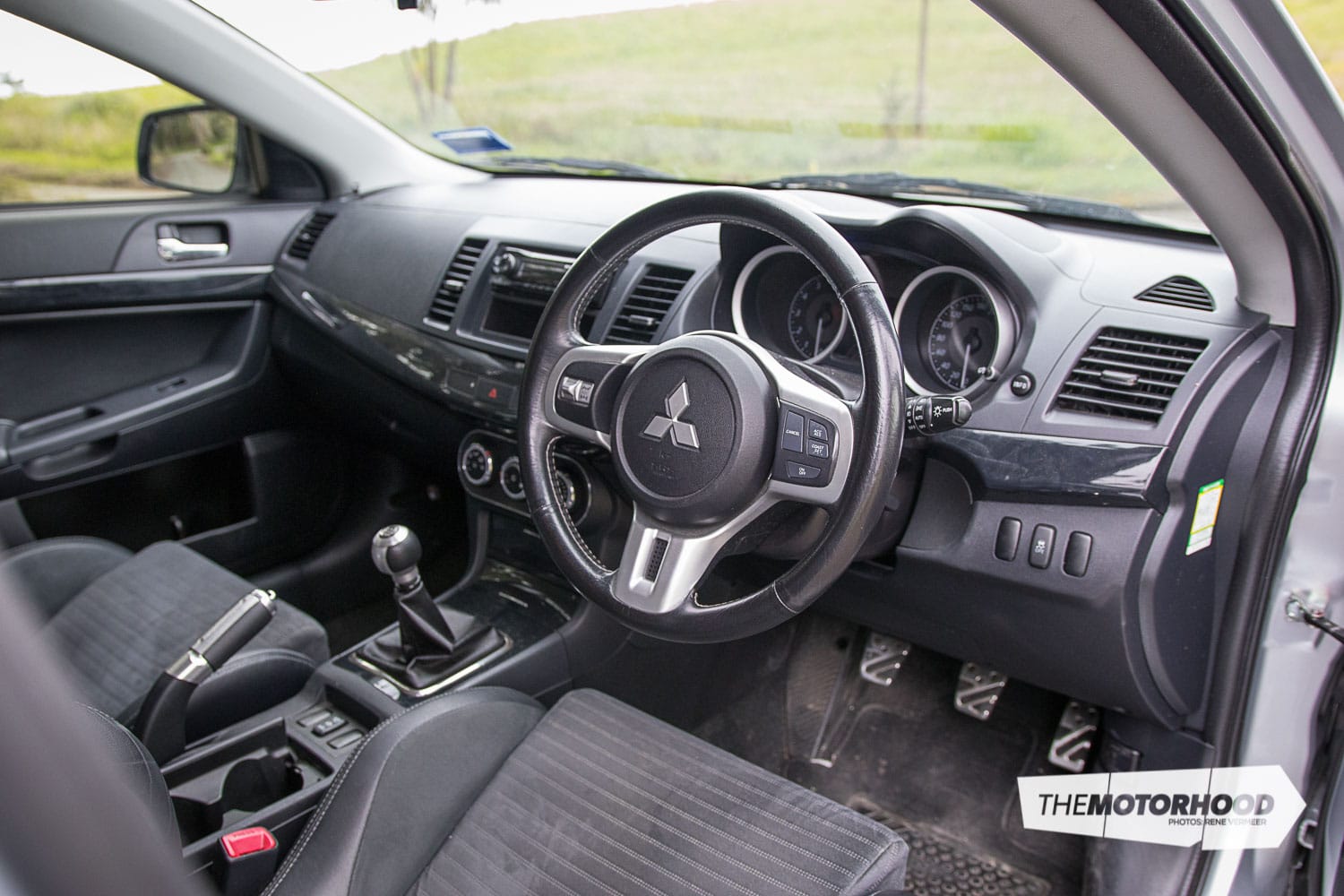What a world we live in; factory performance cars are getting out of control, supercars are now hypercars, and hypercars are now race cars. With this great improvement on factory performance, even the lower-spec ‘sport’ cars are boasting 300kW-plus from the factory.
This has all only occurred recently though, as only five years ago Japanese performance cars were boasting much more modest power figures, but still had huge potential. The question I ask is this; is a stock Mitsubishi Evo X boring? I teed up with Logan Foster, a 2012 Mitsubishi Evo X owner, to find out if the 221kW 4B11T power plant in the Evo X makes it all a bit humdrum.

Mitsubishi has been producing the Evolution since ’92, and it’s been a hit all around the world because of its all-wheel drive powertrain, sleek-yet-aggressive sedan styling, and of course the two-litre turbocharged power plant. They’re a staple within the New Zealand car scene, and we never get sick of seeing them modified.
If you’ve driven an Evo, even a stocker, you’ll know they’re punchy, they’ve got grip for days, and the Recaro-equipped interior holds you and your passenger in tight for the ride. Modify them, and they respond well. The 4G63 engine has been known to exceed 700kW in drag applications, and the newer 4B11T engine has proven its tunability, too. Oh, and did I mention that they can do any sort of motorsport out there?

Logan’s GSR example is as close to stock as I could find (not an easy thing to do), but it features an Xforce three-inch stainless-steel high-flow cat-back exhaust system. Within the gearbox, it features a Ralliart plate centre diff and Exedy heavy-duty clutch, teamed up with AMS under-hood shifter bushes.

The factory body has been enhanced with a Ralliart rear diffuser, which includes the exhaust shrouds and guards. On the rear of the roof, you’ll notice a Varis carbon-fibre vortex generator, and up front from the Varis you’ll find a carbon front lip.
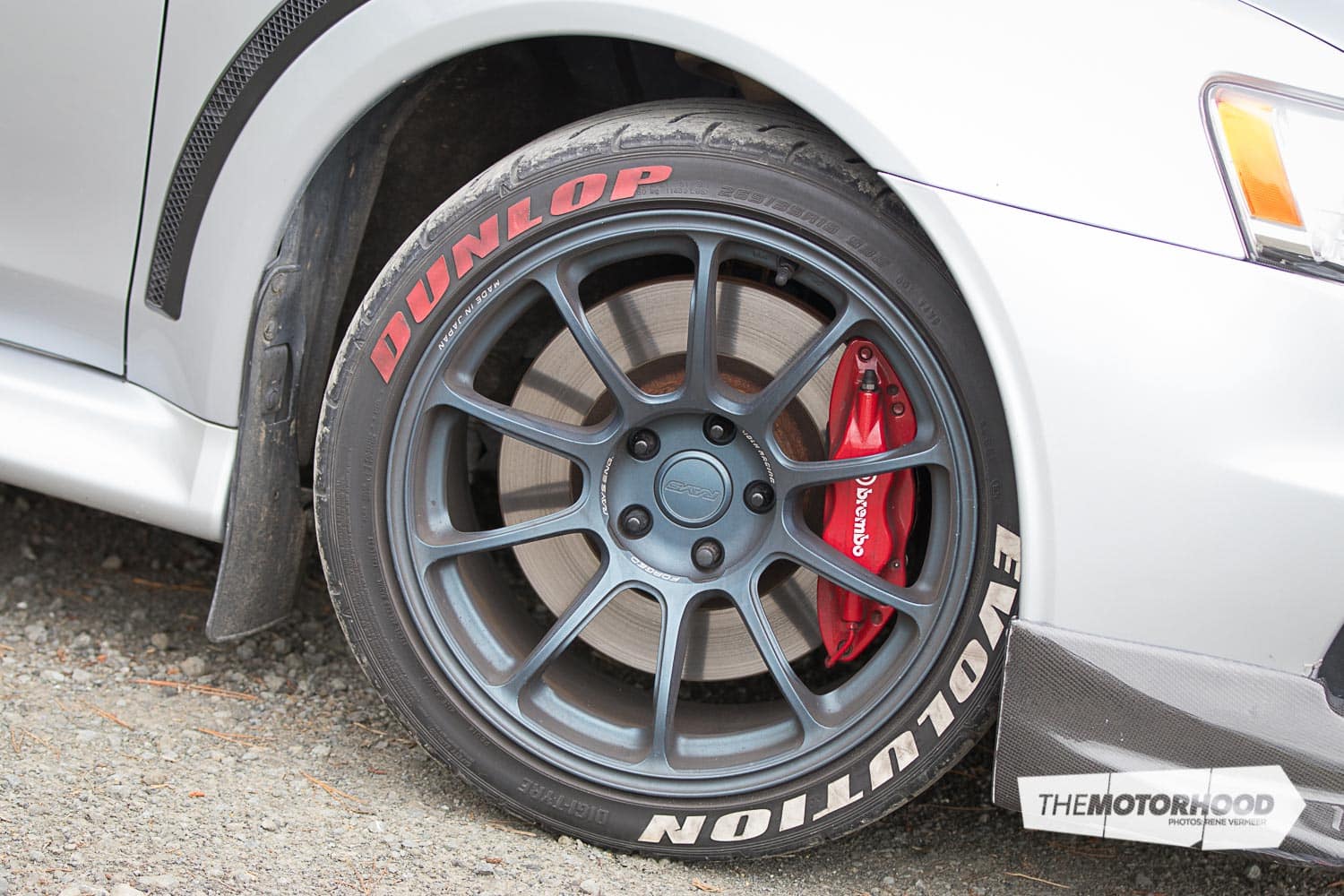
To improve upon the face-mushing handling, Logan has installed Cuso suspension bushes throughout, which help the 265/35R18 Dunlop Z1-wrapped 18×9.5-inch Volk Rays ZE40 wheels claw at the tarmac. Enough of the mods though, is it dull?
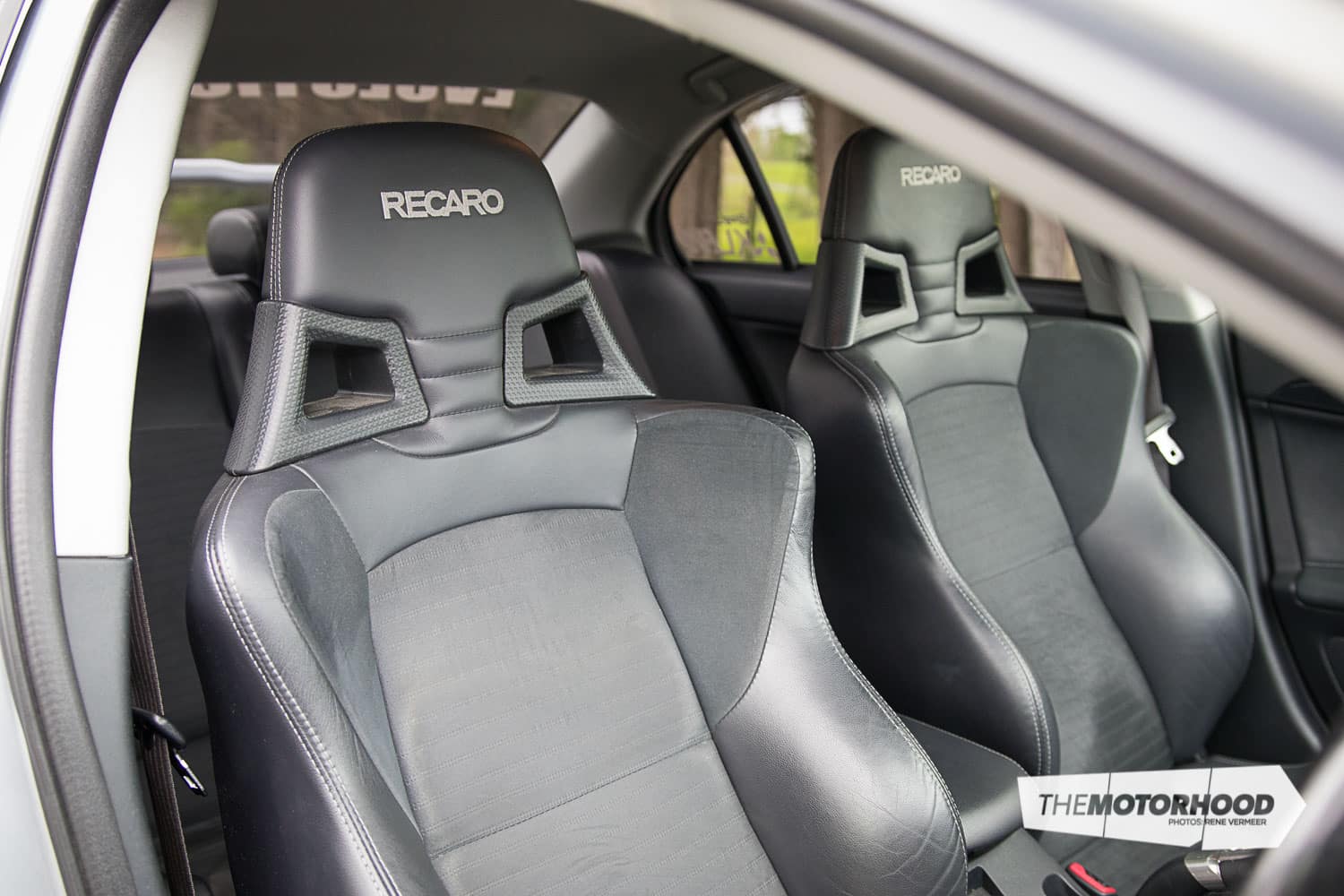
Well, first let’s look at the specs that the internet understands. To hit 100kph you’re looking at 4.7 seconds, and when the twin-scroll turbo hits, combined with the Mivec, you’re in for one helluva ride — yeah, stock. Riding in an Evo X is a nice place to be, and as a passenger you’re comfortable, feel safe in your Recaro, and don’t mind that you’re not driving.
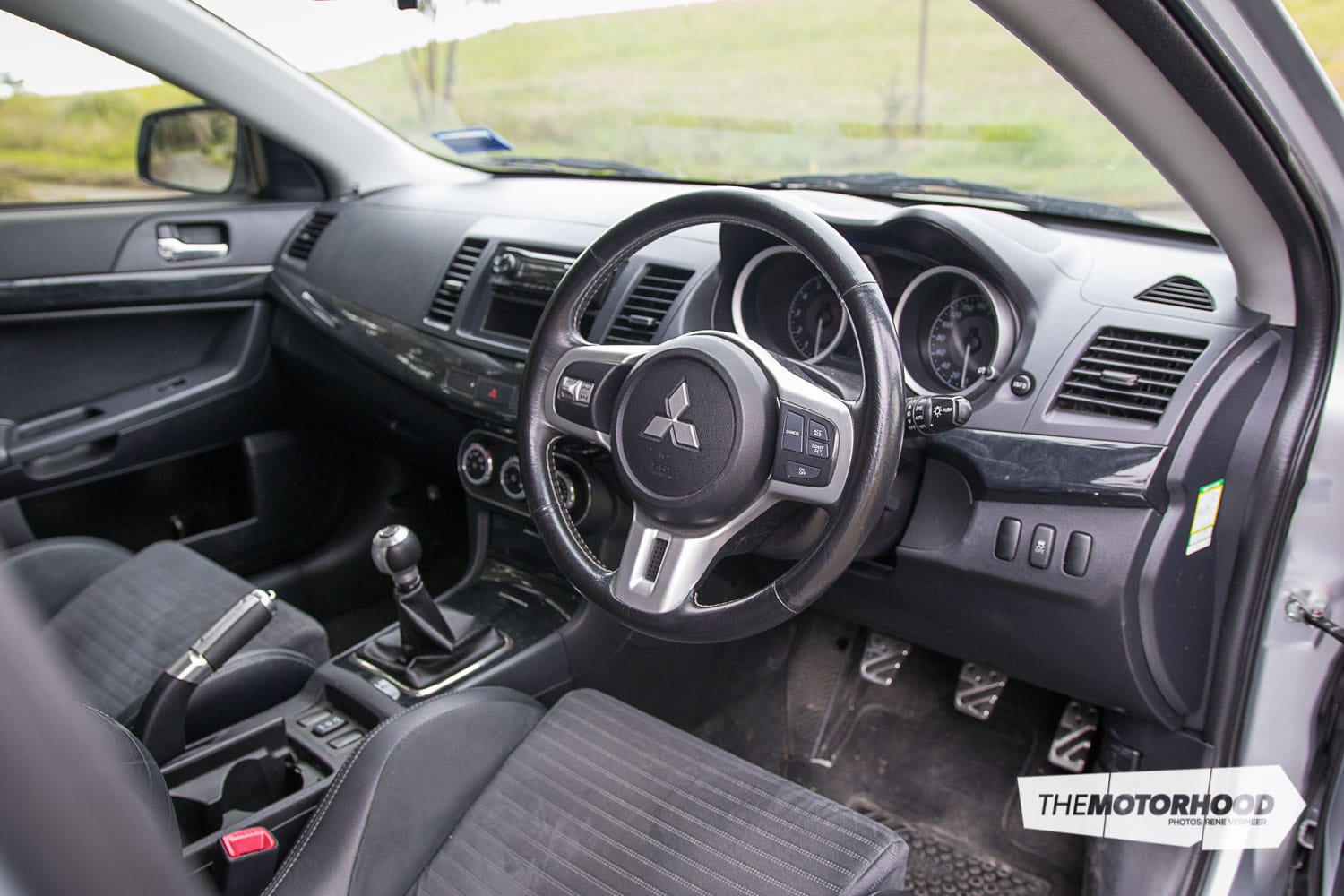
As a driver, you’re holding on mid corner with a tight grip, as most haven’t experienced the G-forces these can pull off, thanks to the extremely clever active differentials. All of this is starting to sound a bit exciting.
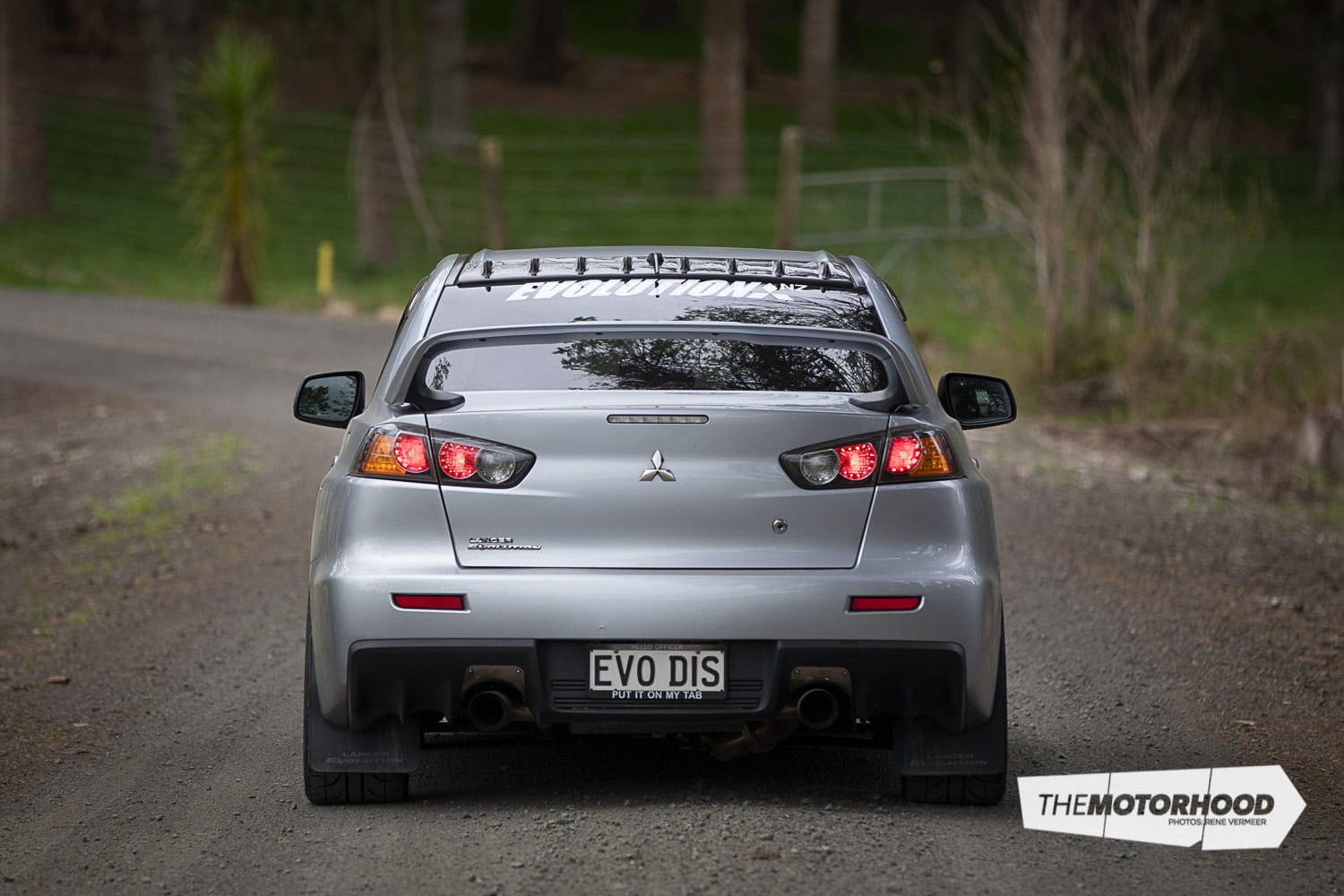
Unfortunately, the exterior doesn’t excite me as much as the earlier generations, but maybe I’m old school. The front end is super aggressive, but the back, well, it looks like your usual commuter car, but with twin pipes and a wing. Logan’s looks good though, as he’s opted for a big wheel and tyre combo, but has retained the factory ride height as it gets driven on gravel roads often (where it feels right at home I might add!).
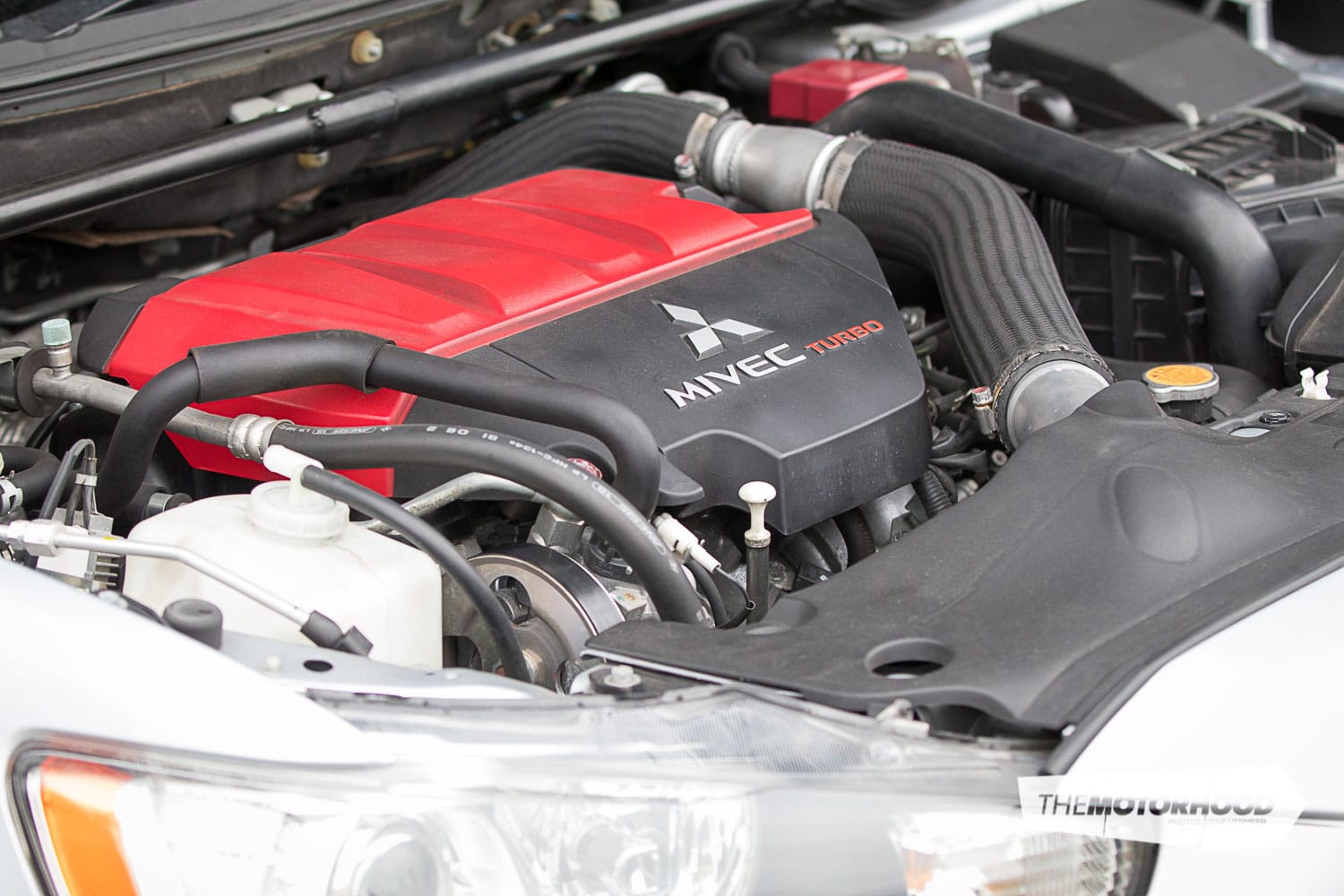
After crawling in, around, and over Logan’s Evo X, I can honestly say I don’t think it’s boring. It might look a little tame from the back, but as soon as the clutch engages at wide-open throttle, the gravel will spray those behind you anyway. As a driver, this car most certainly isn’t boring. In fact, as a general road user, it’s got the right amount of power. It might be left for dead on a race circuit in stock trim, but it’s more capable than the average driver is behind the wheel.

My next mission is to find a highly modified example and see how much more exciting the Evo X platform can be, but for now enjoy the gallery of Logan’s immaculate GSR sitting pretty on a gravel road on the back streets of Wainui, Rodney, Auckland.
What do you think — does the Evo X need to be modified to be exciting? Let me know in the comments below.

















